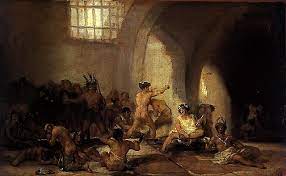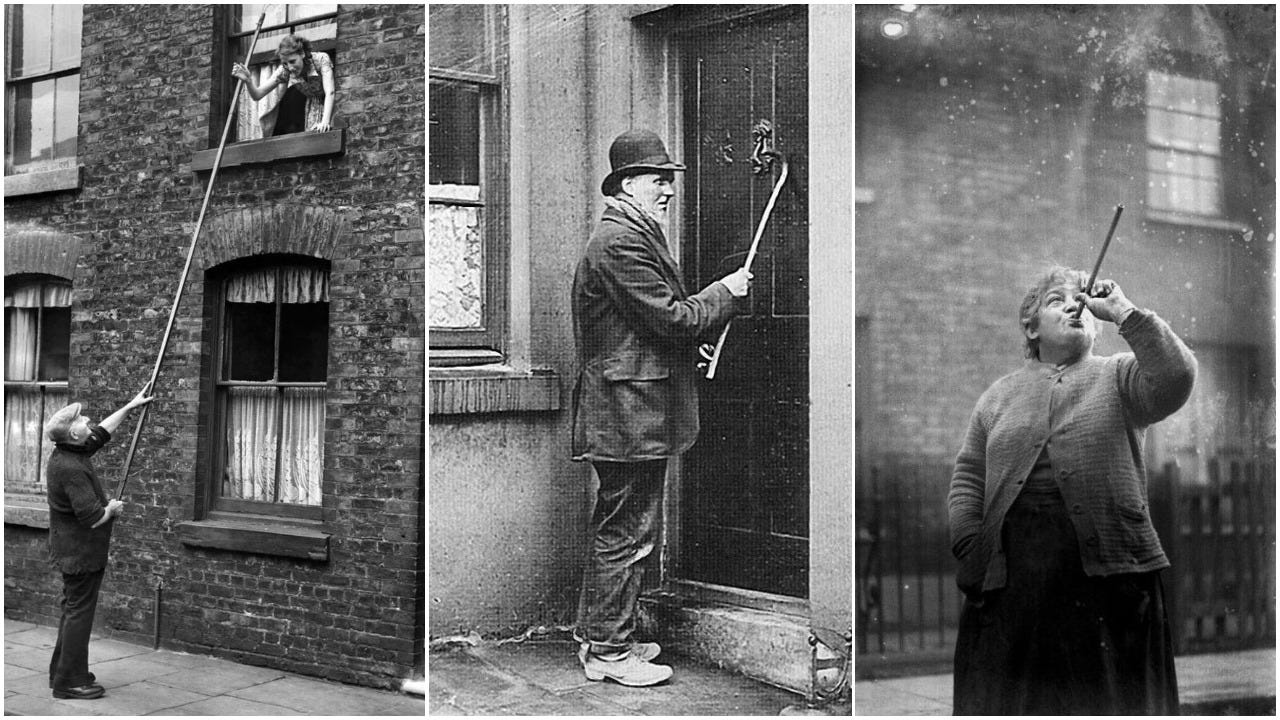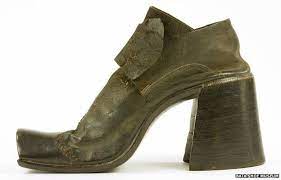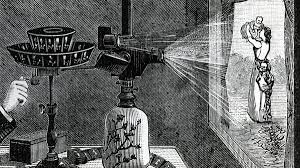Have you ever stopped to think just how weird some of the things we used to consider normal actually were? I mean, seriously, there was a time when people thought it was okay to smoke cigarettes on airplanes or drive without seatbelts. It's almost like previous generations were living in some sort of alternate reality! That includes the bizarre fashion trends of the past. I'm talking about things like bell-bottom pants, mullets, and shoulder pads so big they could double as pillows. It's a wonder how anyone managed to walk around without toppling over.
![]() But the world has also come a long way, and it's amazing to think about how much things have changed in just a few short decades. Of course, who knows what strange things people will be doing and wearing in the future. Maybe they'll look back on our present generations’ obsession with avocado toast or our love for memes and think we were all a bunch of weirdos. But for now, let's just enjoy a good chuckle at the expense of our past selves. Here are weird things that society used to consider normal:
But the world has also come a long way, and it's amazing to think about how much things have changed in just a few short decades. Of course, who knows what strange things people will be doing and wearing in the future. Maybe they'll look back on our present generations’ obsession with avocado toast or our love for memes and think we were all a bunch of weirdos. But for now, let's just enjoy a good chuckle at the expense of our past selves. Here are weird things that society used to consider normal:
 Homes for disobedient wives and other crazy people. America mostly stopped putting people into insane asylums around the same time poor families quit sticking little kids into orphanages, so hooray for progress. According to the American Psychological Association, though, In the early 20th century mentally ill people - or, you know, women who thought maybe their husbands didn't know everything - were sent to the insane asylum. There, they got to live out the remainder of their days in deplorable conditions because it was way easier than divorce. Not everyone who went to an insane asylum was a woman whose husband couldn't be bothered to divorce her. Some genuinely mentally ill people were placed there, too, but the places were more like holes to die in than places where the mentally ill could be helped with their condition. Happily, that started to change with the advent of psychotherapy and with the general realization that it's just not nice to put people in insane asylums.
Homes for disobedient wives and other crazy people. America mostly stopped putting people into insane asylums around the same time poor families quit sticking little kids into orphanages, so hooray for progress. According to the American Psychological Association, though, In the early 20th century mentally ill people - or, you know, women who thought maybe their husbands didn't know everything - were sent to the insane asylum. There, they got to live out the remainder of their days in deplorable conditions because it was way easier than divorce. Not everyone who went to an insane asylum was a woman whose husband couldn't be bothered to divorce her. Some genuinely mentally ill people were placed there, too, but the places were more like holes to die in than places where the mentally ill could be helped with their condition. Happily, that started to change with the advent of psychotherapy and with the general realization that it's just not nice to put people in insane asylums.
It is Illegal to Be Ugly! Did you know that there was a time when it was illegal to be ugly? Yes, you read that right. In the late 19th and early 20th century, many big cities in the United States had laws that prohibited people who were "unsightly" or "disgusting" from appearing in public. These laws were called "ugly laws" or "unsightly beggar ordinances."
One example of these laws was in Chicago, where in 1881, Alderman James Peevey introduced an ordinance that banned people who were "diseased, maimed, mutilated, or in any way deformed" from the streets of the city. This law continued to be enforced until 1974.
But Chicago was not the only city with an ugly law. Here are four more examples:
1. San Francisco: In 1867, San Francisco passed an ordinance that made it illegal for "any person who is diseased, maimed, mutilated, or in any way deformed to be an unsightly or disgusting object" to appear in public.
2. Cleveland: In 1901, Cleveland passed an ordinance that made it illegal for "any person who is diseased, maimed, mutilated, or in any way deformed to be an unsightly or disgusting object" to appear in public without a license.
3. Omaha: In 1919, Omaha passed an ordinance that made it illegal for "any person who is diseased, maimed, mutilated, or in any way deformed to be an unsightly or disgusting object" to appear in public without a license.
4. Los Angeles: In 1921, Los Angeles passed an ordinance that made it illegal for "any person who is diseased, maimed, mutilated, or in any way deformed to be an unsightly or disgusting object" to appear in public without a license.
It's hard to imagine that such laws existed, but they did. These laws were discriminatory and violated the rights of people with disabilities. Thankfully, they have been abolished, and we now live in a more inclusive society where everyone is accepted and valued for who they are.
Trick or Turkey? Did you know that Halloween wasn't always the only holiday where people dressed up in costumes and begged for candy? In fact, back in the day, people used to do that on Thanksgiving! According to an 1897 LA Times article, Thanksgiving was "the busiest time of the year for manufacturers of and dealers in masks and false faces." However, this tradition was short-lived, as it bothered a lot of adults who found it annoying. By the 1930s, the practice of going door-to-door in search of treats became a Halloween tradition, although it was mostly an organized event meant to curtail vandalism and violence - hence the expression "trick or treat."
When Cigarettes Were Medicine. Believe it or not, there was a time when doctors recommended smoking cigarettes to patients. Cigarette companies even used to advertise their products with doctors' endorsements, claiming that cigarettes provided "temporary relief of paroxysms of asthma." In fact, a nationwide survey revealed that "more doctors smoke Camels than any other cigarette." These advertisements were meant to convince people that smoking was safe, despite the growing evidence that it was harmful. Sadly, doctor-endorsed cigarette ads persisted until the 1960s, when the surgeon general finally declared that smoking was dangerous. "100,000 doctors have quit smoking cigarettes. You can too."

Professional Wake-Uppers. Before alarm clocks were invented, people had to rely on other methods to wake up on time. Some people drank a lot of water before bed, so they would wake up early because they had to pee. But others used the services of a "knocker-upper." In the UK and Ireland, a knocker-upper was a person who went around the neighborhood with a long stick tapping on people's windows. This practice continued until the 1970s, probably because a tap on the window was a much nicer way to wake up than that awful shriek from your alarm clock.
The Origins of Brunch: Brunch is one of the most popular meals of the week, but did you know that it has a fascinating history? The word "brunch" was first used in an 1895 article by British writer Guy Beringer. He suggested that instead of having a heavy breakfast and a light lunch, people should have a combination of the two - a meal that is both savory and sweet and served with alcohol. Beringer argued that brunch would be perfect for people whose "Saturday-night carousal had run into Sunday morning." And he was right - brunch quickly became a popular weekend activity, especially among the wealthy.

Men Wore High Heels. High heels have been a fashion statement for centuries, but their origins are surprising. They were first worn by men in the 16th century, as a way to make them appear taller and more powerful. In fact, high heels were a symbol of masculinity and were worn by everyone from soldiers to aristocrats. It wasn't until the 18th century that women started wearing high heels, as a way to mimic men's fashion. But over time, high heels became associated with femininity and glamour, and they remain a popular fashion accessory to this day.
The Heart Had a Vein Directly Connected to the Ring Finger. Wedding rings are a symbol of love and commitment, but did you know that they were first worn by ancient Egyptians? They believed that the ring finger on the left hand had a vein that led directly to the heart, so they wore a ring on that finger as a symbol of eternal love. The tradition of exchanging wedding rings was later adopted by the Romans, who used iron rings as a symbol of strength and permanence. Gold rings became popular in the Middle Ages, and diamonds were added to wedding rings in the 15th century. Today, wedding rings come in all shapes and sizes, but they continue to serve as a symbol of love and commitment.
The Fist Bump Indicated Solidarity. The fist bump is a widely used greeting, but did you know that it has its roots in African American culture? The fist bump, also known as the dap, was first used by black soldiers during the Vietnam War as a way to show solidarity and support for each other. It was later popularized by basketball players in the 1970s, and it has since become a popular greeting in many cultures around the world. The fist bump is not only a cool and casual way to greet someone, but it also has a rich cultural history.
The First Selfie. While the term "selfie" may be relatively new, the concept has been around for over a century. In 1839, Robert Cornelius took the first-ever selfie. He set up his camera and then ran in front of it to take a photo of himself. Little did he know that he would be starting a trend that would last for centuries to come.
The High Five. The high five is a gesture that has been around for a long time, but its origins are a bit unclear. Some believe it started in the 1940s when baseball player Glenn Burke raised his hand to greet a teammate after hitting a home run. Others think it started in the 1970s with the NBA's Los Angeles Lakers. Regardless of its origins, the high five has become a universal symbol of celebration and congratulations.
The Bubble Wrap. Bubble wrap is a product that many of us take for granted, but it has a fascinating history. It was invented in 1957 by engineers Marc Chavannes and Al Fielding. The original purpose of bubble wrap was not for packing fragile items but as textured wallpaper. However, it didn't take long for people to realize that it was more useful for protecting delicate items during shipping.
Ice Cream Cones. Ice cream cones are a staple of summer, but did you know they were invented by accident? In 1904, at the World's Fair in St. Louis, an ice cream vendor ran out of cups. He saw a waffle vendor nearby and asked him to roll up his waffles to create a cup for the ice cream. It was a hit, and the ice cream cone was born.
The First Computer Bug. The term "bug" is commonly used to refer to a computer problem, but its origins are quite literal. In 1947, a computer at Harvard University malfunctioned, and the engineers discovered that a moth had gotten caught in one of the machine's relays. They removed the moth and taped it to the logbook with a note that read, "First actual case of bug being found."

Magic Lanterns: Before YouTube tutorials and Instagram influencers, there were simpler times. Times when people were entertained by magic lantern shows, which were like early 20th-century PowerPoints, except without the boredom. Imagine an artist painting an image on a piece of glass, and then projecting that image onto a screen. It was like a real-life Photoshop, only with fewer cat memes. But as time went on, people got bored of magic lantern shows. They realized that staring at a screen for hours on end was not as fun as going outside and playing with firecrackers. So, they invented new ways to entertain themselves.
Cats Can Play the Piano: For example, in the 1800s, people used to pay money to watch a cat play a piano. Yes, you read that right. It was called the "Cat Piano" and it was basically a piano with cats inside it. Every time you hit a key, a cat would meow, creating a "song". It was a hit with audiences until they realized that cats are not very good at playing piano, and also, it was just plain cruel.
Giant Wigs Bring Prestige: But that's not all. In the 1600s, people used to wear giant wigs made of horsehair. These wigs were so big that they had to be held up by wooden frames. If you think that sounds uncomfortable, you're not wrong. People used to get headaches and neck pain from wearing these wigs, but they did it anyway because it was fashionable.
Leeches Suck Out Bad Blood: people used to believe that putting leeches on your body was good for your health. Yes, leeches. They would suck your blood and supposedly cure all sorts of ailments. It was like a DIY bloodletting kit.
The Atrocious Dabbing Dance: And let's not forget about the "dabbing" craze of 2016. It was a dance move that involved tucking your face into your elbow. It was all the rage until people realized how ridiculous they looked doing it.

In the end, we can all be grateful that we've moved on from these weird and wacky customs and forms of entertainment. Now we have TikTok dances and Netflix binges. But who knows what the future holds? Maybe one day we'll look back on our current forms of entertainment and wonder how we ever found them entertaining.


You must be logged in to post a comment.